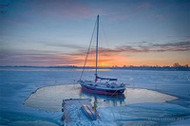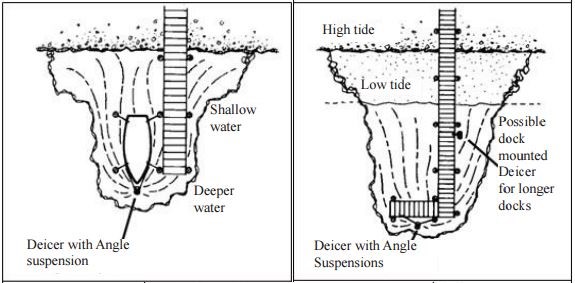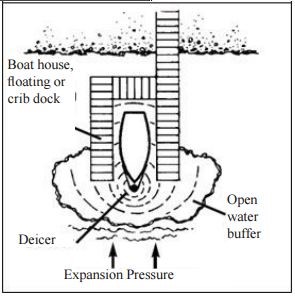5 Things to Consider When Buying a De-Icer
10th Dec 2015 | Posted by Kate
So… you’ve decided to invest in a de-icer to protect your personal property from costly ice damage this winter, but you’re not quite sure exactly what you need to get the job done.
Well, de-icing is a bit of an art form, and as such, there is no ‘one size fits all’ solution that will apply to every scenario. Each location will have a number of factors, including climate, water depth, and obstructions, that can vastly impact the success of any de-icing efforts. The key to installing the best de-icing system is to consider these five factors prior to purchasing any de-icers for your particular location and application.
- Location and Size Geographic location and the size of the area to be cleared are very important factors in determining your de-icer needs. The lower the temperatures fall over a longer period of time, the less area a single de-icer will be able to clear. So regions with typically long and extremely cold winters, like Alaska and Minnesota, will generally require a de-icer with more horsepower to protect an ice-prone area. Factor in the size of the area to be cleared, and you may find that multiple de-icers are necessary.
- Water Type
- Water Depth
- Power Type and Source Most de-icers and ice eaters are available in either 115V or 230V. Choose a model with the same voltage as your outlet. Whichever you choose, the amount of electricity used will be the same if operated similarly. This is because the 230V unit will pull more power at a time, but it will need to operate for less time than the 115V unit.
- Obstructions Objects in the water (i.e. boat hulls, dock floats, pilings, etc.) can obstruct, restrict, or re-route the warm water flow created by a de-icer, limiting the effectiveness of the unit. The more objects in the area, the greater the potential for obstruction. In some cases, you may need multiple de-icers to ensure continuous water movement in the area you’re trying to keep clear of ice. In all cases, the units will need to be mounted in the proper location and positioned appropriately for maximum performance.
Review the Kasco and Power House Features to see which de-icer or ice eater will work best for your location and application.

Temperature varies among different types of water. For instance, the more salt in the water, the lower the freezing point. So fewer units may be needed in sea water or brackish water applications than in fresh water. We suggest a quick online search to determine the average high and low winter temperatures for the specific body of water in which you wish to install a de-icer.
De-icers work by moving warmer subsurface water up to the colder surface water. The deeper the water, the more warm water will be available to de-ice the area. However, if the water is too deep, the rising warmer water will not effectively spread at the surface. Likewise, mounting your de-icer in shallow waters can reduce its effectiveness due to limited availability of warm water, especially during a long winter. Warmer water is more important than surface circulation in colder climates, so you may want to consider installing your de-icer or ice eater in water that is a bit deeper in these areas.
To achieve maximum performance and successful de-icing efforts, water should typically be at least 4’ – 6’ deep for vertical installation, and slightly shallower for angled operation. For colder climates, consider installing your de-icer in water that is at least 6’-8’ deep. In all cases, the de-icer should be at least one foot off the bottom to prevent clogging from debris.
When dealing with tidal influences, you’ll want to split the difference in water depth so the de-icer is in shallow water at low tide and deep water at high tide (one option is to mount your de-icer to a boat or floating dock which will allow the de-icer to rise and fall with the tide).

Also, consider the distance between the outlet and the location where the de-icer will be used. It’s important to order a de-icer or ice eater with a power cord that is long enough to reach your de-icer directly from the outlet without need for an extension cord. Voltage is naturally lost as electricity travels through a power cord, so any additional connections, such as an extension cord, will result in an even greater loss of voltage. This can result in reduced efficiency of your de-icer and may damage the unit.
Kasco De-icers are available with cord lengths up to 100’ and Power House Ice Eaters offer cord lengths up to 200’.

While determining the best de-icing system does require some prior planning, the long-term benefits of installing the proper de-icer(s) to protect your personal property far outweigh any initial preparation or financial investment.


